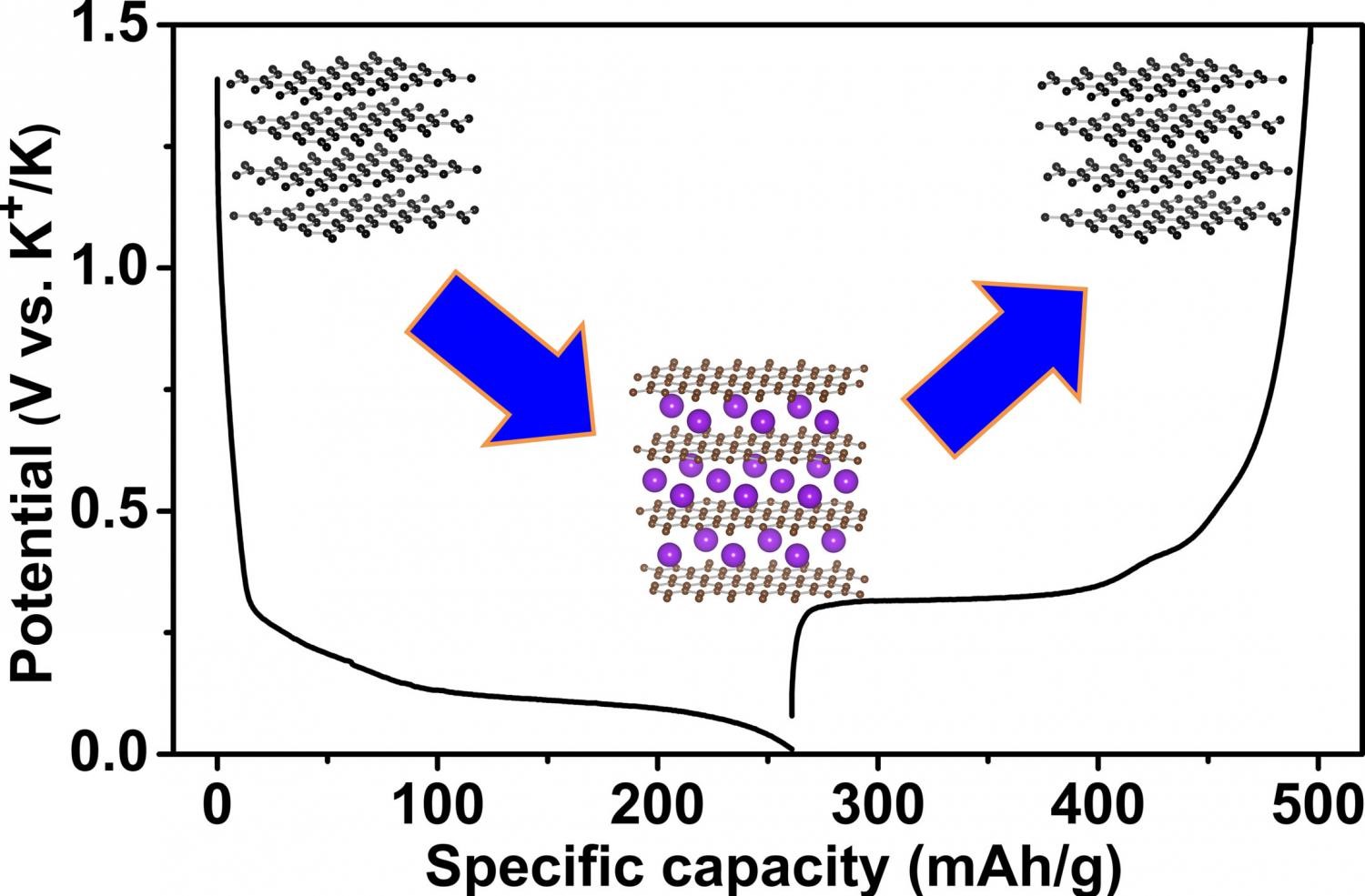
The long held dogma that potassium is incompatible with graphite in potassium-ion batteries was recently overturned, baffling scientists that none of their colleagues retested the assumption in 83 years. New findings stemming from researchers at Oregon State University finally prove just that, challenging the ubiquitous lithium-ion battery as a sustainable alternative.
Interestingly enough, research published as far back as in 1932 already demonstrated that potassium-ion batteries are possible, but timing of the discovery was overshadowed with the Great Depression and other bigger news stories at the time, before falling wayside.
“For decades, people have assumed that potassium couldn’t work with graphite or other bulk carbon anodes in a battery,” said Xiulei (David) Ji, the lead author on the study and assistant professor of chemistry in the college of Science at Oregon State University.
The underlying importance called into attention by the findings are of substantial importance, suggesting alternative ways of building batteries that can function with inexpensive and well-established graphite as the anode in much the same way that lithium can. But unlike lithium, which is extremely rare and found in only 0.0017 percent of the Earth’s crust, potassium is 880 times more abundant and comparatively less expensive.
“The cost-related problems with lithium are sufficient that you won't really gain much with economies of scale,” Ji said. “With most products, as you make more of them, the cost goes down. With lithium the reverse may be true in the near future. So we have to find alternatives.” But as it currently stands, the performance of potassium-based batteries remain inferior to does of the lithium-ion sort and may never exceed the latter’s energy density even if technology narrows the gap.
“It's safe to say that the energy density of a potassium-ion battery may never exceed that of lithium-ion batteries,” he said. “But they may provide a long cycling life, a high power density, a lot lower cost, and be ready to take the advantage of the existing manufacturing processes of carbon anode materials.”
OSU intends to further its research and one day commercialize the new technology; patents are already pending. The ongoing IoT boom necessitates inexpensive and more efficient batteries.
The in-depth research paper may found in the Journal of the American Chemical Society .
Source: Phys.org
Advertisement
Learn more about Electronic Products Magazine





